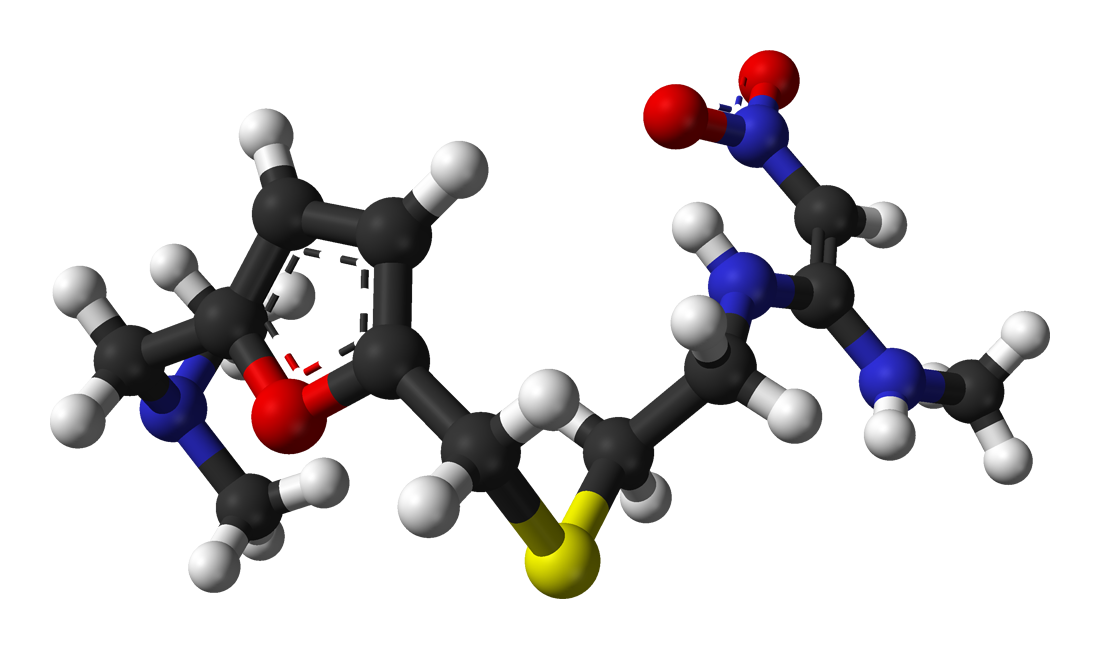| name | Ranitidine |
| classification | H2-receptor antagonist |
| pharmacokinetics | Ranitidine is absorbed rapidly after oral administration. Peak plasma concentrations are reached within 1-2 hours. The drug is extensively metabolized in the liver, primarily via CYP2D6. The elimination half-life is typically 2-3 hours, but can be prolonged in patients with hepatic impairment. Ranitidine is excreted primarily in the urine as metabolites. |
| suggested dosage | | adult | | general acid reflux | 150 mg twice daily or 300 mg once daily | | duodenal ulcer | 150 mg twice daily or 300 mg once daily | | gastric ulcer | 150 mg twice daily or 300 mg once daily | | other indications | Dosage should be adjusted according to specific indication and patient response. Consult prescribing information for detailed dosage guidelines. |
| | notes | This is a general guideline. Actual dosage will be determined by your physician based on your individual needs and health conditions. Never adjust dosage without consulting your doctor. |
|
| indications | | 1 | Treatment of peptic ulcers (gastric and duodenal) | | 2 | Prevention of peptic ulcer recurrence | | 3 | Treatment of gastroesophageal reflux disease (GERD) | | 4 | Symptomatic relief of heartburn and acid indigestion | | 5 | Treatment of Zollinger-Ellison syndrome |
|
| safety in pregnancy | Limited data on the use of ranitidine during pregnancy. Consult with your physician. There is a risk to the fetus during pregnancy when this drug is used so it should be used only under strict medical supervision. |
| safety in breastfeeding | Ranitidine passes into breast milk. However, the amount is considered unlikely to pose harm to a nursing infant. Consult with your physician. |
| side effects | | 1 | Headache | | 2 | Dizziness | | 3 | Nausea | | 4 | Vomiting | | 5 | Constipation | | 6 | Diarrhea | | 7 | Abdominal pain | | 8 | Rash | | 9 | Pruritus (itching) | | 10 | Other reported, but less common adverse reactions include hepatic effects, and very rarely, blood disorders. | | 11 | **Serious:** A rare but serious side effect is a potentially fatal blood disorder called agranulocytosis. |
|
| alternatives | |
| contraindications | | 1 | Known hypersensitivity to ranitidine or other H2-receptor antagonists. | | 2 | Severe hepatic impairment |
|
| interactions | | 1 | Ketoconazole | | 2 | Other drugs metabolized by the liver (CYP2D6) | | 3 | Cimetidine | | 4 | Specific interactions with other drugs are possible. Consult with your pharmacist or physician. |
|
| warnings and precautions | | 1 | Monitor liver function tests if prolonged use is anticipated. | | 2 | Avoid use in patients with a known history of blood disorders or who are at increased risk. | | 3 | Monitor renal function if renal impairment is present. | | 4 | Inform your physician about all medications you are taking, including over-the-counter drugs, supplements, and herbal products. |
|
| additional information | Ranitidine was recalled due to the presence of N-nitrosodimethylamine (NDMA), a known carcinogen. Use of current batches should be considered carefully and discussions with a physician is necessary to ensure the safety of the patient. This has significantly reduced the use of ranitidine. Always consult your physician for guidance. |
| patient profile | |

